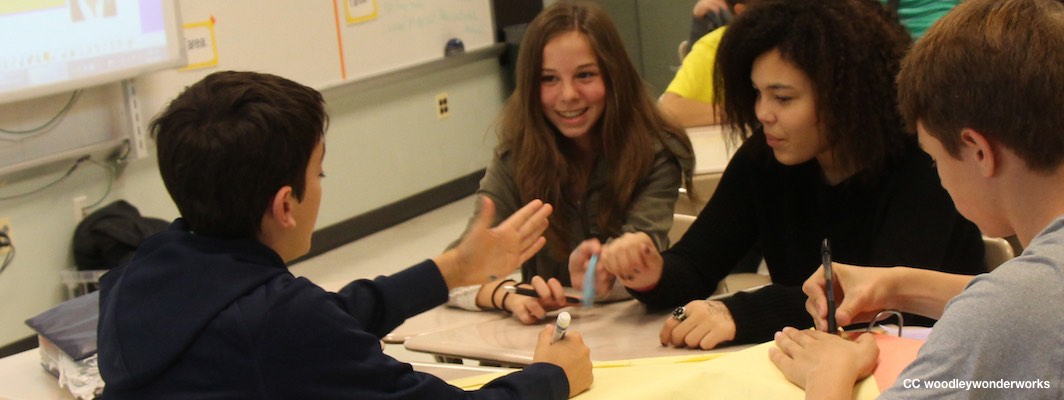
What is Purpose for Learning?
Developed by University of Texas-Austin psychology professor David Yeager, purpose for learning teaches students to learn with the goal of making a broader, positive impact on the world. For example, students can set goals such as, “gain skills I can use in a job to help others,” and learn material to “become an educated citizen that can contribute to society.” They can then connect these aims with self-focused goals, such as expanding their knowledge of the world or becoming critical thinkers. Doing this encourages students to develop an internal drive, or intrinsic motivation, for learning, and find meaning in mundane schoolwork (2).
Yeager found that low-income high school seniors who cited purposeful goals (similar to those above) as their motives for learning, viewed academic work as more meaningful, and persisted longer at boring tasks in the face of tempting digital distractions compared to students who cited self-oriented goals for learning (e.g., making money, gaining respect) (3).
Students with purpose-driven goals were also more likely to enroll in college after graduation (nearly 64 percent) compared to students who reported other reasons for learning (30 percent). In one scenario, high schoolers wrote testimonials about the importance of learning course material with the intention to make an impact in the world. This practice helped them to internalize these views and increase their GPA scores in STEM classes, particularly among low-performing students (3).
Why does it work?
Research shows that when students learn with compassionate or altruistic intentions, they view their academic work as more meaningful and beneficial (4,5). According to Yeager, this enhances students’ persistence, leading them to process the information more deeply and gain better recall of material (3).
Purpose for learning interventions also work because they are aligned with students’ learning needs. All students, especially adolescents, benefit from having a sense of belonging (6), autonomy in learning (7), and intrinsic motives to learn (6,8)– all of which are keys to student motivation.
The Future of Purpose for Learning
Many unmotivated students are seeking an answer to the question, “Why am I doing this?” Purposeful learning encourages them to generate their own answers to this question. However, it remains unknown how this intervention might be adapted for younger students (K-5), and whether it will be as effective for this age group. Also unclear is why it’s more effective for low-performing students than for high-performing students, or how long the positive effects of these interventions can last.
We have much to learn about underlying cognitive changes that might take place as students attach greater meaning to their academic work: Could this shift in learning attitudes and prosocial beliefs help students beyond the classroom? Future work with student populations of varying abilities and ages will help answer these questions.
While growth mindset and persistence practices alone might lead students to expect effort and rigor to be followed by success, a purpose for learning teaches students that effort may not lead to immediate results, but is needed in order to make a greater impact on the world. Since students can’t always be rewarded for their hard work, those who have a greater purpose to learn will have a good reason to stay motivated even when their efforts aren’t followed by rewards and immediate success.
In this way, purpose for learning presents an effective means for fostering a generation of motivated, socially conscious learners.
To read more about the research on Student Motivation, visit the Student Motivation page on our Research Map.